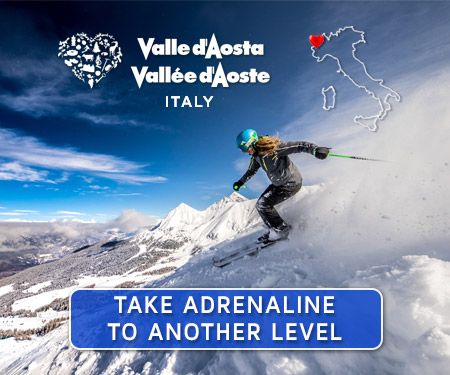Ranked
107th
of 236 ski resorts
Overall Rating
4.33
From 80 Reviews
275
Total Runs
8120
Bottom Elevation
11570
Top Elevation
5289
Skiable Terrain
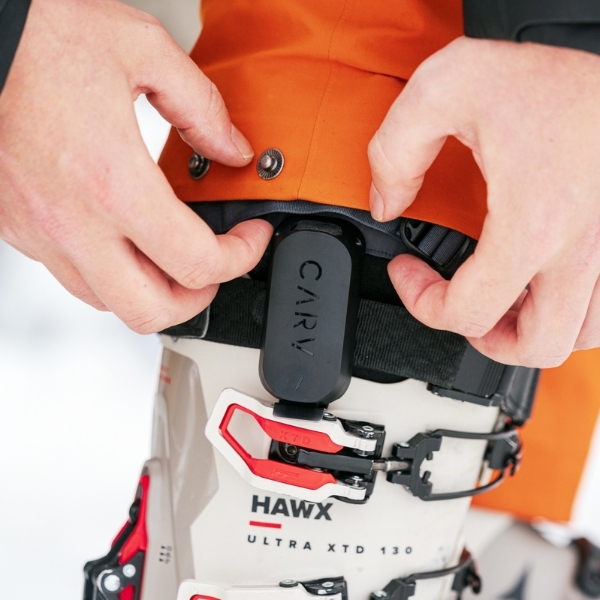
Sponsored Partner
Unlock Challenging Slopes in Vail
Level up your ski technique, master more of the mountain and have more fun on the snow with Carv! Carv 2 clips to your boot, helping you to improve on every terrain type. Get real-time audio coaching as you ski, as boot sensors detect your movement.
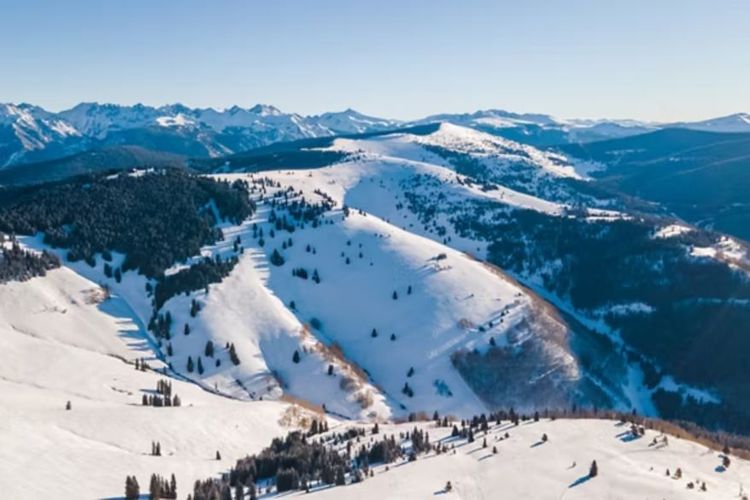
Vail Overview
In recent decades, Vail Resorts has become a ski industry behemoth. The company owns over 40 ski resorts on three different continents. This expansion owes itself primarily to the success of Vail itself, a ski area in Colorado’s central Rockies. Like the company that runs it, Vail is massive. With around 5,300 acres of skiable terrain, it is easily one of the largest resorts in North America. That terrain includes slopes for all types of skiers, from ample groomers to the wide open Back Bowls and huge swathes of trees where powder hounds can go sniffing for treasure. And treasure isn’t too hard to come by; Vail gets an average of around 250 inches of fresh snow a year. Epic terrain aside, Vail is famous for its luxurious amenities. Some skiers look down on the resort for this reason, but no one can raise any serious objection to Vail’s incredible terrain.
"Vail is a premier destination, renowned for its expansive and diverse ski terrain, particularly its iconic back bowls, offering an unparalleled experience for skiers and snowboarders. "
"Relaxing, breathtaking views and wonderful skiing ️ terrain- with outstanding accommodations and easily accessible."
"Awesome resort. Best to avoid weekends and holidays. Powder days in the back bowls are the best!!!"

The Skiing in Vail
Vail is suitable for people of all experience levels, but intermediate and advanced skiers will certainly get the most out of it. To get that out of the way first, Vail does have slopes for first-timers and beginners, but most of these are, well, a bit out of the way. Given the cost of skiing at Vail (it’s quite high), it’s hard to recommend for newbies — unless of course they’re mostly drawn to the other Vail, the luxury shops and world-class restaurants.
For everyone else, Vail has just about everything. The resort loves to highlight what it calls ‘the Legendary Back Bowls’. And with good reason. These predominantly south-facing slopes were mostly cleared of trees after a fire that raged decades before the ski area was established. As such, there are hundreds (if not thousands) of lines down every run. Almost entirely made up of advanced terrain, many expert skiers will spend their entire day making lines across the seven bowls that make up the area which locals simply call ‘the Back’. China Bowl is favored by many, but the Sun Up and Sun Down bowls are excellent as well (and don’t tell anyone but Tea Cup Bowl is a hidden gem, just be prepared for a bit of a catwalk at the end of your runs).
But to get to the Back, you have to start from somewhere. That would be Vail’s Front Side. Though the bowls have an outsized footprint in Vail’s marketing materials, the Front Side should not be mistaken as merely a stepping stone on your way to the Back. It is, after all, bigger than most other ski resorts. All of Vail’s beginner terrain is found on this range of mostly north-facing slopes, but so are advanced areas like the runs served by the Highline chair. If you like to crush steep moguls, it’s the best skiing Vail has to offer. Also of note is Game Creek, the only place on the Front Side that gets called a bowl. With a very fast chairlift and a good mix of intermediate and advanced runs, it can make for some very efficient and rewarding skiing — when the crowds are light, anyway. And every skier needs to tackle Riva Ridge, a four-mile run that goes from the very top all the way to the base.
Finally, there’s Blue Sky Basin, my personal favorite part of Vail. Blue Sky abuts the Back, so you need to ride up to the top of the Front, ski down to the base of Tea Cup or China Bowl, and ride up again to access the terrain. The sojourn is well worth it. Like the Back, Blue Sky has no beginner terrain. Unlike the Back, it is heavily wooded. Even days after a fresh snow, it isn’t hard to find clean lines in the trees. Blue Sky is also home to lots of great cliff features and Vail’s largest cornice, the aptly named Lovers Leap.
Vail’s strength is definitely its huge size and diversity of terrain. But obviously it’s not without weaknesses. One notable deficiency is a relative lack of steep terrain. There are certainly bits of mountain with high grades, but they never go on for too long. Other skiers complain about an overabundance of catwalks. While it’s certainly true that you’ll spend some time on roads at Vail, those who know the mountain well can learn how to avoid them. The resort isn’t a great choice for anyone who loves terrain parks either. Vail usually erects, but both have fairly small features.
Vail’s biggest problem (and I don’t think you’ll find many who would disagree) is its crowds. A curse of its popularity, unfortunately. Huge though it is, Vail can nevertheless feel crowded at times. Like with the catwalks, there are ways to avoid the anthill even on a busy day. But, as anywhere, the best solution is to time your trip around major holidays and weekends whenever possible.
"A vast resort with excellent staff on piste, and a great variety of terrain to choose from"
"Great mountain for intermediate to expert level skiers and snowboarders. Lots of backcountry trails and plenty of room for everyone to share, without worry of having bare runs. You can take a free bus through the entire village and to all of the runs."
Ranked Highly For

Après-Ski
25th of 230 worldwide

Mogul Fields
17th of 229 worldwide

Eating Out
25th of 241 worldwide
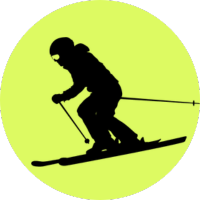
Intermediates
12th of 122 worldwide
Eating Out in Vail
When the time comes to fill your stomach, Vail has many options — and some don’t even require you to empty your wallet! On-mountain dining is always an option, but frankly, the quality has taken a dive in the past decade or so. There are two food court-style dining areas on the Front Side and a posher option in the form of The 10th, a full-service restaurant. The Back has Two Elk, which has great views and alpine architecture but lackluster food. The best options are the smaller huts, namely Wildwood, which is focused on smoked meats. If you want a full meal on the mountain and a drink to go with it, expect to spend at least $30. You’ll leave full but probably not impressed.
Off the mountain, things are a lot better. Starting on the cheaper side, the local favorite is La Cantina. It’s located next to the bus station inside the Vail Village parking structure. You can get a filling and tasty meal for as low as $10. If you’re looking to eat in the middle of your ski day, Los Amigos is located at the base of the mountain. It’s more expensive but the quality is similar enough. For pre-ski fuel, Lionshead’s recently expanded Little Diner has great breakfast food and reasonable prices.
As for fine dining, there’s too much to cover here. Upscale contemporary cuisine can be found at Mountain Standard (the bone marrow carpaccio is a must-try dish), Sweet Basil, and La Tour, just to name a few. Matsuhisa is even more expensive than all of the above, but it’s a great treat if you’re in the mood for Japanese food.
"Food offering on the mountain is very expensive and not very good except the Smokehouse at the top of Wildwood Express, which is fantastic!"
The Après-Ski in Vail
When it comes to nightlife, Vail leans heavily toward après ski drinks rather than serious late-night debauchery. The town has dozens of bars to choose from, many just a short walk from the base. The aforementioned La Cantina has great margaritas as well as food and its location right next to the bus stop makes it a popular stop on the way home. Bart & Yeti’s has had enough local support to stay open and independently owned for decades, which really says something. Garfinkle’s has a similar story but is far larger and more suited to a younger and louder crowd. And though it’s 10 minutes down the road by car, the Minturn Saloon sees plenty of skier traffic (including some who take the backcountry route all the way from the ski area).
If you’re looking for something more boisterous that’s open later, the best options are all in Vail Village. Shakedown frequently has live music and is open late. The George doesn’t feature music as prominently but its immense popularity with local workers means the atmosphere remains festive late into the night.
"Always loved the atmosphere here and apres ski after a long day on the mountain."
Vail for Families
Vail is absolutely a family-friendly resort. It has two excellent ski schools, plenty of groomed terrain, and several on-mountain features geared toward children. My only caveat is that Vail’s beginner areas are not super accessible. There’s a bunny hill at Golden Peak and another at the top of the Eagle Bahn gondola, but these are only really suitable for first-timers (or at least first-weekers). If you have kids with a bit more experience, it can be hard to get them to the ideal areas. You’ll need to deal with roads and do some serious navigating. Obviously ski school instructors handle this well, but if your plan is to just go up with your kids, the mountain isn’t very intuitive. Some research is absolutely required.
Vail for Non-skiers
Vail is a resort town, not just a ski area. But whether your non-skier friends and family will enjoy the trip really depends on their interests. If shopping and walking down beautiful streets is one of those, Vail can certainly tick a few boxes. There are also two skating rinks (one indoor, the other in a square), limited mountain access for non-skiers, and an on-mountain activity center with tubing and other games (though this has opened very inconsistently since the COVID-19 pandemic began).
"Amazing spot for families and singles!"
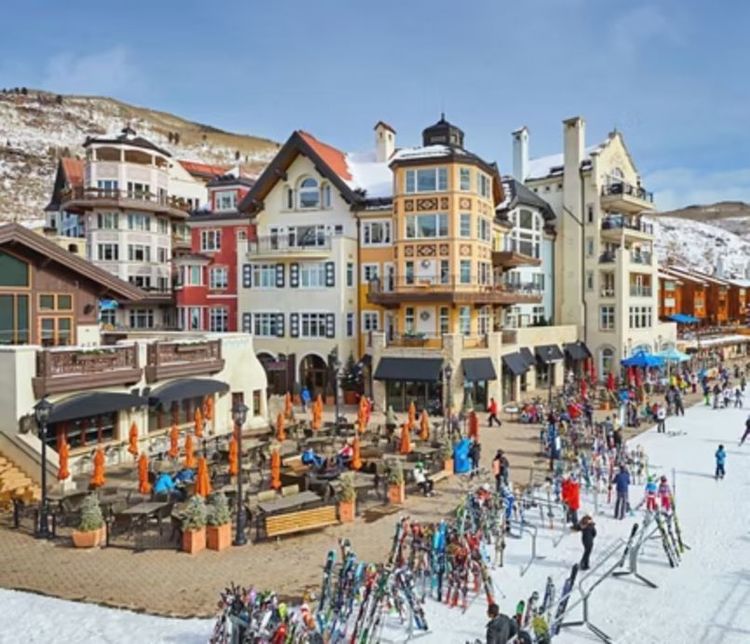
Accommodation in Vail
Vail is expensive. As it is with lift tickets, so too with hotel rooms. If you want to stay in Vail itself, there are several hotels within walking distance of the base. The Ritz Carlton is a good luxury option, as is the Hyatt, which has its own chairlift (out of the main base area but still open to the public).
If you’re looking to spend as little as possible, consider staying in Avon. You can find cheaper options here and it’s only 15 minutes away from Vail by car or bus. As an added bonus, Avon abuts the Beaver Creek ski area, which is well worth trying. Similarly, prices are lower in Silverthorne-Dillon and Frisco. Your commute will be longer (at least 30 minutes in total) and there isn’t an easy bus route, but staying in either of these towns will put you a lot closer to Breckenridge and Keystone, making them a great base if you’re planning to check out multiple resorts.
Environment & Sustainability
Vail Resorts makes a big deal of its commitment to sustainability. The company claims to operate under an “Epic promise” to “do good”. And, so far as I can tell, it isn’t all just talk. Years ago, Vail’s management pledged to produce zero landfill waste by 2030. A part of the focus on waste stems from the fact that a significant portion of the resort and town of Vail’s CO2 footprint comes from contributions to landfills. As of 2024, Vail has made serious progress in reducing waste.
More recently, Vail has pledged to have zero net emissions by 2030. This far more ambitious goal is supposed to be attained by reducing waste as well as measures taken to offset the resort’s carbon emissions. According to corporate documents and other reports, the company is making good progress toward this end.
Nevertheless, it is far from clear whether this will be achieved. Many locals and activists have criticized the focus on diversions (offsets) rather than reductions. Others wonder how Vail can honor this pledge and a similar one to have zero impact on forestry while operating a resort and vastly expanding its snowmaking capacity.
Pros & Cons of Vail
Pros
- Massive resort with all kinds of terrain
- High volume of high-quality snow by regional standards
- Top-notch facilities, shops, restaurants, and hotels
- Easy access to Denver, plus two local airports and several nearby resorts
- Free local transportation and inexpensive regional transportation
- Affordable season pass valid at dozens of ski resorts
Cons
- Very expensive for non-passholders
- Quite crowded during various peak weeks
- Mountain can be unintuitive to navigate for the uninitiated
Recent Reviews
intermediate snowboarder 🏂 United States
Sandra
Dec, 15 2025
I go to Vail every season for at least a weekend even though it’s pretty far away from me. The resort is very well maintained and the town is super cute and walkable. I mostly stick to blue runs and there’s plenty of terrain to enjoy & not get bored over a few days. I have never had an issue with crowds beyond the base gondola, and if you line up for first chair it’s not a problem. Once I’m up on the mountain, I almost never have to wait in line for a lift. There are also plenty of accommodation options in town within walking distance of a lift and not as outrageously priced as you’d think.
expert skier ⛷️ Canada
Austin
Nov, 24 2025
While I did like the skiing, I have to admit that the conditions weren't that great. It was way too hot that most of the snow was melting and created poor skiing conditions. The village is beautiful, but expensive. As a non American, I feel as though there are better mountains to visit to get better value skiing. That said, if you are local to the area, it might very well be worth visiting Vail.
advanced skier ⛷️ United Kingdom
Ama
Nov, 23 2025
Overall a very overpriced resort which takes in many more skiers than it can accommodate. The back bowls are worth visiting though
Vail Resort Stats
Ski Terrain
63Beginner Runs
96Intermediate Runs
110Advanced Runs
6Expert Runs
4 milesLongest Run
5289 acresSkiable Terrain
461 hectaresSnow making
Elevation
11570 feetTop
8120 feetBottom
3450 feetVertical Drop
Lifts
2Gondolas / Cable Cars
19Chairlifts
Lift Pass Costs
$949Season pass
$12747 days
$2291 day
Weather
249 inchesAverage annual snowfall
Vail Travel Information
Airports
50min drive40KMsEagle County Regional Airport (EGE)
150min drive120KMsDenver International Airport (DEN)
120min drive100KMsAspen-Pitkin County Airport (ASE)
Train Stations
60min drive56KMsGypsum Station (Gypsum, CO)
FAQs Skiers' Most Asked Questions
Vail FAQs: Skiers' Most Asked Questions
Is Vail snow-sure?
Vail is relatively snow-sure with its high elevation (2,475m-3,527m) helping maintain good conditions through the season. Our users frequently mention the quality of snow, particularly in the legendary Back Bowls. While powder days are celebrated, the resort also has excellent grooming capabilities and snowmaking systems to maintain conditions during drier periods. Some years can be variable, but Vail's sheer size means you can usually find good snow somewhere on the mountain.
What mountain range is Vail part of?
Vail Ski Resort is located in the Rocky Mountains of Colorado, specifically in the Gore Range subrange. This prime location gives the resort its impressive elevation (3,526m at the summit) and contributes to its legendary terrain, particularly the famous back bowls that our Snomad users consistently praise for their incredible powder and expansive skiing opportunities.
When does the ski season start and end in Vail?
Vail typically opens mid-November to early December, depending on snowfall, and closes mid-April. The resort aims for Thanksgiving weekend opening, with lifts gradually coming online as conditions allow. Our Snomad users mention the back bowls and Blue Sky Basin usually open later in December once snowpack is established. While early and late season can be hit-or-miss, Vail's high elevation helps maintain consistent conditions, earning it 4.69/5 for groomed runs.
Is Vail good for beginners?
Vail is a mixed bag for beginners. While it scores 4.25/5 for beginners, some Snomad users mention limited beginner options. Ian, a beginner skier, noted "Not a lot of options for beginners... It's like playing frogger when green runs cross blue runs." However, Nathaniel, another beginner, praised the "family friendly" atmosphere and "incredible views." The resort offers excellent ski schools (4.53/5 for quality) but be prepared for steep prices and potentially intimidating terrain.
Is Vail good for intermediate skiers?
Absolutely! Vail is outstanding for intermediate skiers, earning 4.61/5 for intermediates. Our users praise the resort's vast, diverse terrain with beautifully maintained wide groomers. Julia calls it "amazing" while Stephen mentions "wonderful skiing terrain." The 96 intermediate runs provide plenty of options, and many users highlight the efficient lift system. Intermediates will particularly enjoy the front side before graduating to the legendary back bowls as confidence builds.
Is Vail good for advanced skiers?
Absolutely! Vail is fantastic for advanced skiers, scoring 4.25/5 for advanced skiers. The legendary Back Bowls offer unparalleled terrain that our users consistently rave about. As Eugene, an advanced snowboarder says, there's "lots of backcountry trails" while Shane mentions the Back Bowls are "truly Legendary" especially on powder days. Blue Sky Basin is particularly praised by expert skiers for its challenging terrain. The variety of moguls, tree runs and steeps keeps even the most skilled riders entertained for days.
Is Vail good for expert skiers?
Absolutely! Vail scores 4.18/5 for experts and our users confirm it's excellent for advanced riders. The legendary Back Bowls and Blue Sky Basin offer challenging terrain that experts rave about. Steve, an expert skier, notes you'll "always find good runs regardless of conditions." Another Snomad user mentioned the back bowls are "indescribable" on a bluebird day. The variety of terrain, mogul fields, tree runs and powder zones make Vail a paradise for those seeking more technical challenges.
Is Vail good for non-skiers?
According to our Snomad users, Vail offers plenty for non-skiers. Sarah describes it as "like a fairytale town" where you can ice skate, shop, and relax in various accommodations. The village has a charming European-inspired atmosphere with upscale boutiques and excellent dining options. While it's on the pricier side, the beautiful pedestrian mall provides a fantastic experience for those not hitting the slopes.
Is there snow at Christmas in Vail?
Yes, Vail typically has good snow conditions at Christmas. With a top elevation of 3526m, the resort usually has reliable snow coverage during the holiday season. Our Snomad users frequently mention the quality of grooming with a groomed runs rating of 4.69/5. While no resort can guarantee perfect conditions, Vail's extensive snowmaking capabilities help ensure a white Christmas. As Eugene, an advanced snowboarder, notes: "Plenty of room for everyone to share, without worry of having bare runs."
Where should I stay in Vail and what type of accommodation is available?
Vail offers a range of accommodation options across several distinct areas. Our users praise the resort's accommodation options (4.50/5).
Vail Village is the heart of the resort with upscale hotels and condos in Swiss-inspired architecture. Lionshead offers more ski-in/ski-out options, ideal for families. For budget-conscious travellers, West Vail provides more affordable lodging with easy bus access to the slopes.
As Eugene notes, "You can take a free bus through the entire village and to all of the runs," making even non-slopeside accommodation convenient for accessing the mountain.
What's the best way to get to Vail?
Most international travellers fly into Denver International Airport, then drive 2 hours (120 miles) west along I-70 to Vail. For convenience, you can book shuttles from the airport or rent a car. Eagle County Regional Airport, just 30 minutes from Vail, offers fewer international connections but is much closer. During winter, the resort offers excellent connectivity with lift efficiency rated 4.45/5, making it easy to navigate once you arrive.





